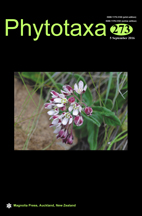Abstract
Seven Penicillium strains were isolated from soil samples polluted by heavy metals in different zones of Guizhou Province, China. Phenotypic identification proved to be difficult and this data was therefore supplemented with ribosomal internal transcribed spacer region and partial β-tubulin sequences. Comparison of the obtained sequences with references sequences showed that six strain belonged to Penicillium section Lanata-divaricata and one strain to section Sclerotiora. Three of the seven isolates belonged to a new species and were named here P. terrarumae sp. nov. The other four isolates were identified as P. cremeogriseum, P. guanacastense, P. griseopurpureum and P. oxalicum.

